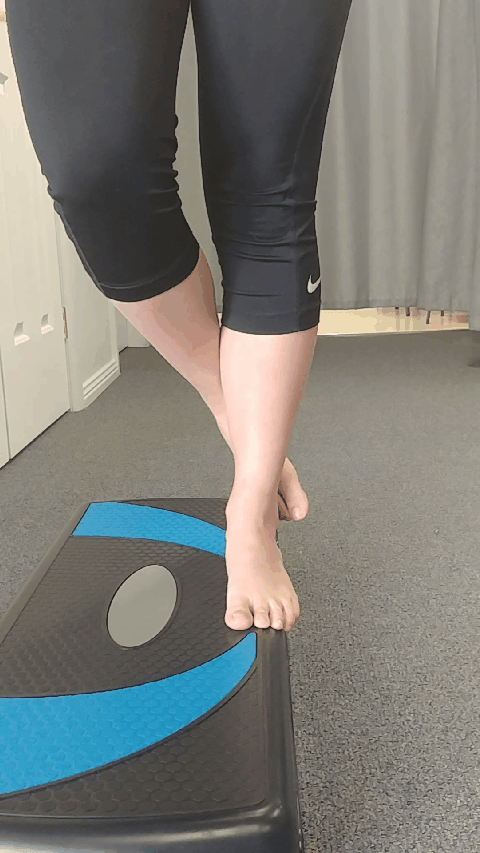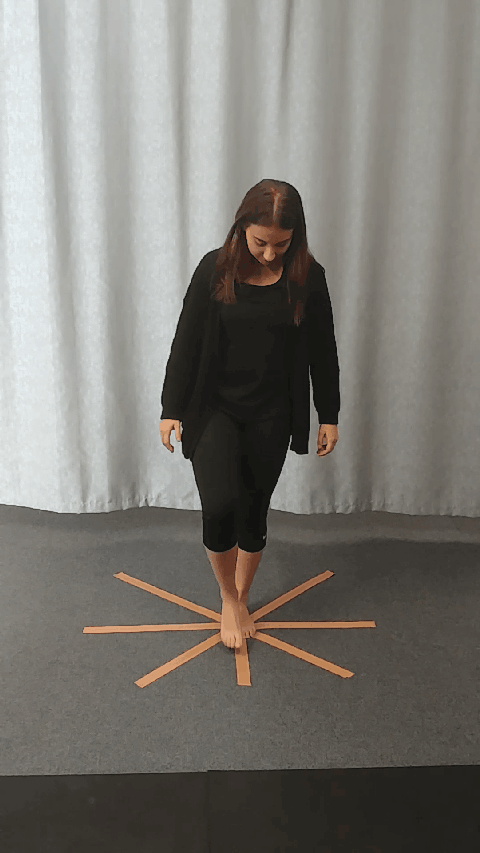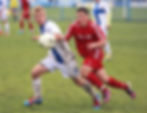Ankle Sprains: Advanced Management

In our previous blog we looked at what exactly an ankle sprain is and its initial management. This blog will focus on the later stages of rehabilitation once swelling and pain have settled and range of movement has improved. This stage is particularly important in reducing the chance of recurrence of ankle sprains. Having your physiotherapist guide you through these exercises is important for efficient progress and safety as these exercises can be more challenging.
STRETCHING
Throughout rehabilitation restoring range of motion can be achieved through stretching the muscles of the lower leg once pain allows. Two muscles which are commonly affected are the gastrocnemius and soleus muscles which, when tight, restrict ankle dorsiflexion (pointing your foot upwards). Simple exercises can assist to restore this range when completed often throughout the day.
Gastrocnemius Stretch

The Gastrocnemius muscle starts from behind the knee and runs down into the Achilles tendon. Therefore when stretching this muscle, it is important to have a straight knee.
Soleus Stretch

The Soleus muscle starts below the knee into the Achilles tendon, therefore it is important to bend the knee.
STRENGTHENING
In addition to continuing the calf raises described in our previous blog, resistance band exercises can facilitate strengthening, particularly in different directions. This includes inversion (foot turning in) and eversion (foot turning out) exercises in addition to the dorsiflexion and plantarflexion (foot pointing down) movements to further strengthen the muscles around the ankle that may have weakened directly from the injury or from secondary immobility.
Theraband Resistance Exercises:
1 – Inversion (Turning In)

2 – Inversion/Eversion (Turning Out)

Inversion/Eversion off a step The movements of inversion and eversion can also be progressed to a standing position targeting the ankle invertors and evertors to restore strength for improved function - Make sure you have something to hold on to!
1 - Inversion off a Step

2 - Eversion off a Step

BALANCE AND PROPRIOCEPTION
In addition to strength and range of motion restoration, balance and proprioception are a vital component of ankle rehabilitation.
Proprioception refers to the body’s ability to be aware of its movements in space. When landing from a height or stepping on an unstable surface this system engages in order to fire muscle fibres and turn off others in order to maintain stability.
During an ankle sprain the nerves attaching the muscles can be disrupted causing a loss of proprioception due to a delay in response time of the muscle fibres, increasing the likelihood of re-injury. For this reason, balance and proprioception exercises are employed in order to improve function, return to sport and prevent ankle sprain recurrence.

Single-leg stance
Single-leg balance exercises are a basic exercise to begin with, with the goal of standing on the injured leg as long as the non-injured leg. This exercise can be progressed to standing on the one leg with eyes closed for more of a challenge. This exercise can be implemented into daily life, for example, standing on the one leg while brushing your teeth each morning.

Single-leg stance on Foam
This can also be progressed to standing on a foam pad. The softer and thicker the surface, the more challenging the exercise. This replicates the uneven surfaces experienced in day-to-day life.

Single-leg Balance with Overhead Transfer
This can further be progressed by transferring a weight across the body overhead. This exercise increases your centre of mass further away from your ankle, forcing your ankle stabilisers to work harder.
In most sports and in our daily lives we’re doing and thinking more than one thing at a time. This also aims to address that by challenging the body’s ability to balance whilst multi-tasking.
Balance Clock
Furthermore, the Balance Clock or Star Excursions are another method to improve balance whereby, standing on the one leg, the other leg reaches for opposite sides of the body replicating the image of a clock i.e. reaching from 12 to 6 o’clock, 1 to 7 o’clock, 2 to 8 o’clock etc. This can also be done with the standing leg on a foam block for more of a challenge.

Balance Clock Progression on Foam

FUNCTIONAL REHABILITATION
Functional rehabilitation aims to employ all the components of exercise including, stretching, strengthening, balance and proprioception together to complete functional movements used in daily living or returning to sport.
Jumping and Landing
A single-leg leap onto a foam block from different directions is a strategy to challenge balance, proprioception and strength of the lower limb.

Plyometric Exercises
This can be furthered to jumping off a step, onto the floor then onto a foam mat. This loads the affected ankle whilst employing the plyometric properties of the lower leg to change direction and hop onto a foam surface.

Sport-specific activities
The last stage of rehabilitation for athletes is to complete exercises and drills specific to their sport. This commonly includes agility-based exercises as well sport-specific skills. Exercises aim to replicate the movements completed in the sport as closely and functionally as possible including the footwear, equipment and environment.

For more information regarding the management of ankle injuries or if you have other questions, don't hesitate to contact us or you can book online to make an appointment
We also have a Winter Special Offer (under the 'Special Offers' category) for initial appointment booked online and receive 50% off your consult. (Terms and conditions apply)
REFERENCES
Bleakley, C., Dischiavi, S., Taylor, J., Doherty, C., & Delahunt, E. (2017). Rehabilitation reduces re-injury risk post ankle sprain, but there is no consensus on optimal exercise dose or content: a systematic review and meta-analysis. Abstracts From The 7Th International Ankle Symposium: 2017. doi: 10.1136/bjsports-2017-anklesymp.30
Bleakley, C., O'Connor, S., Tully, M., Rocke, L., MacAuley, D., & Bradbury, I. et al. (2010). Effect of accelerated rehabilitation on function after ankle sprain: randomised controlled trial. BMJ, 340(may10 1), c1964-c1964. doi: 10.1136/bmj.c1964
Chinn, L., & Hertel, J. (2010). Rehabilitation of Ankle and Foot Injuries in Athletes. Clinics In Sports Medicine, 29(1), 157-167. doi: 10.1016/j.csm.2009.09.006
Holme, E., Magnusson, S., Becher, K., Bieler, T., Aagaard, P., & Kjaer, M. (2007). The effect of supervised rehabilitation on strength, postural sway, position sense and re-injury risk after acute ankle ligament sprain. Scandinavian Journal Of Medicine & Science In Sports, 9(2), 104-109. doi: 10.1111/j.1600-0838.1999.tb00217.x
Lazarou, L., Kofotolis, N., Pafis, G., & Kellis, E. (2017). Effects of two proprioceptive training programs on ankle range of motion, pain, functional and balance performance in individuals with ankle sprain. Journal Of Back And Musculoskeletal Rehabilitation, 1-10. doi: 10.3233/bmr-170836





















